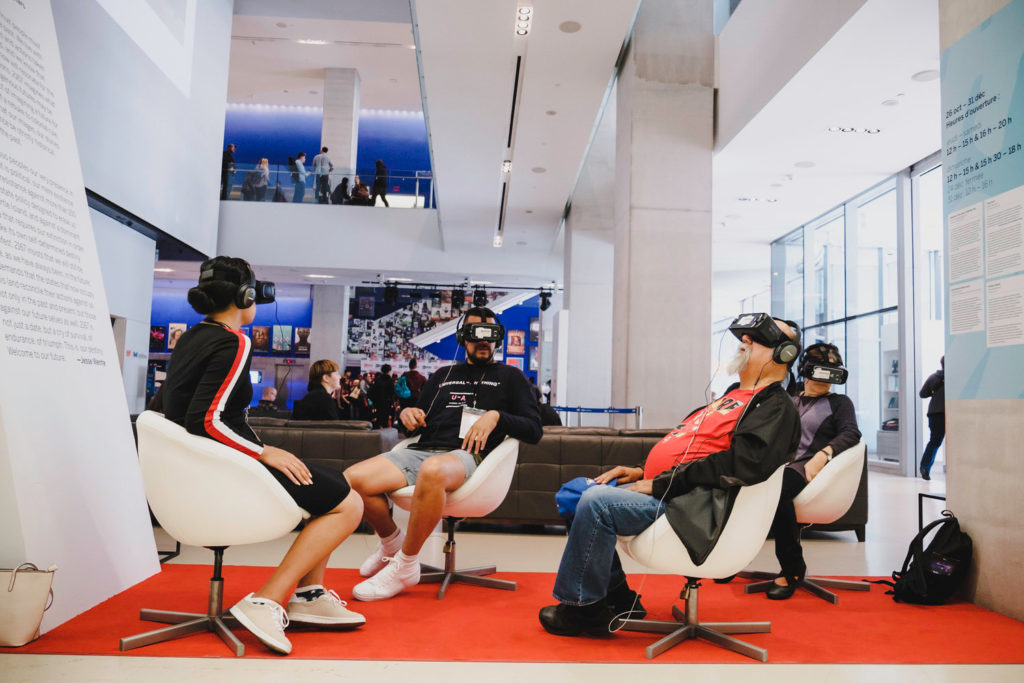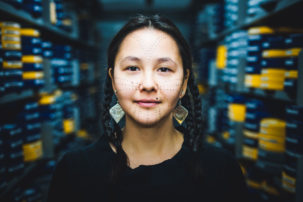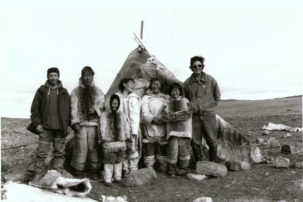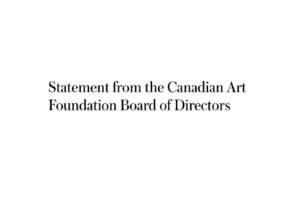Right now, there’s a countdown clock on the homepage of imaginenative.org. Every second it ticks down brings it closer to October 17: the day when the world’s biggest presenter of Indigenous screen content kicks off its annual festival in Toronto.
This year, imagineNATIVE features 153 individual media artworks, including 10 feature-length dramatic films—the most in imagineNATIVE history. Overall, works by 156 Indigenous artists will be seen, representing 109 Indigenous nations from Canada and across the world. This year also brings an expanded five-day industry program, as well as the advent of iNdigitalspace, a large-scale presentation of digital and interactive work on the main floor of the TIFF Bell Lightbox. The latter will feature more than a dozen VR pieces, games, online platforms and digital web series.
“I think one of the things that has benefitted us was a long-overdue increase in funding from the Canada Council,” says artistic and managing director Jason Ryle when asked about the growth of the festival this year. “Increases in funding from the public and private sectors as well have helped us bring on more people to help achieve what we want to do.”
The scope of Indigneous screen creation has also surged, further driving festival expansion. “The depth of work being made by Indigenous screen content creators continues to grow,” says Ryle. “It’s remarkable how each year we learn of new filmmakers and new digital artists.”
Events at imagineNATIVE range from traditional cinema screenings to installations in local art galleries. Among the keystone programs are a showcase of Marjorie Beaucage‘s work curated by Lisa Myers; a conversation with Alanis Obomsawin, who will present a clip from her upcoming documentary; a look at Zacharias Kunuk’s latest documentary work Kivitoo: What they Thought of Us; and a screening of Oscar Catacora’s Wiñaypacha, the first feature film ever made in the Aymara language.
“It’s a really exciting time to think about Indigenous filmmaking,” says Ryle. “In Canada, there’s over 15 Indigenous-made feature films either made or in production this year. That’s a record in this country. And I think that’s an interesting thing to point out because these films will be coming out over the course of the next few years, and continue to change the landscape nationally and internationally.”
Ryle notes that festivals like Winda in Sydney, Australia, Maoriland in Otaki, New Zealand, and Skábmagovat in Inari, Finland—the latter of which features an outdoor cinema made out of snow and ice—are just some of the important events for Indigenous film internationally.
“One of the things that really excites me,” says Ryle, “is that in talking about Indigenous cinema we are getting to the point where we can talk about Indigenous national cinema—like Mohawk cinema or Maori cinema or Inuit cinema.”
International collaboration has also been key in imagineNATIVE’s efforts to create an Indigenous cinema stand at the Berlinale and its associated European Film Market each year. And international connections for Indigenous film are set to grow again this spring at the Venice Biennale, when Isuma TV will be featured at the Canada Pavilion.
“The work Isuma has done in its approach to community-based production reflects, in so many ways, Inuit and Indigenous cultures’ approaches to storytelling,” says Ryle. “We hope that [the Venice show] brings wider attention to the diversity of Indigenous screen-based work.”
While Ryle will be heading to Venice in 2019 to see the Isuma presentation, he also has a lot on the go in Toronto to consider. “We are already in the planning stages for our 20th next year,” says Ryle. “And it promises to be much bigger.”
imagineNATIVE runs October 17 to 21 in Toronto, with selected art exhibitions continuing after festival close.

 A small VR program at the 2017 imagineNATIVE festival. This year, events around digital and interactive works are due to expand. Photo: Courtesy of imagineNATIVE.
A small VR program at the 2017 imagineNATIVE festival. This year, events around digital and interactive works are due to expand. Photo: Courtesy of imagineNATIVE.







